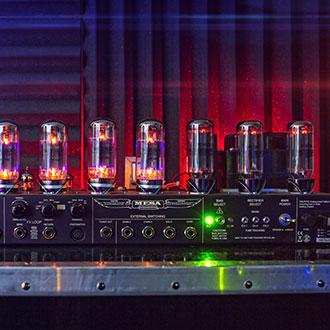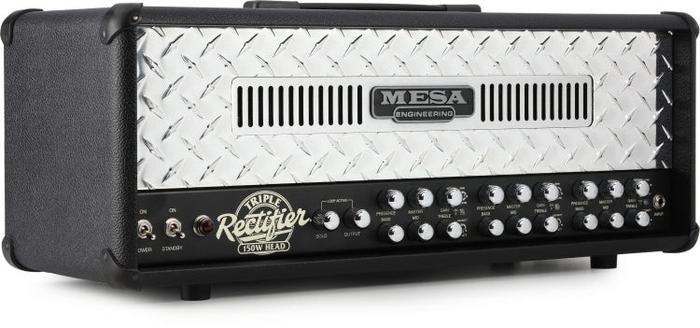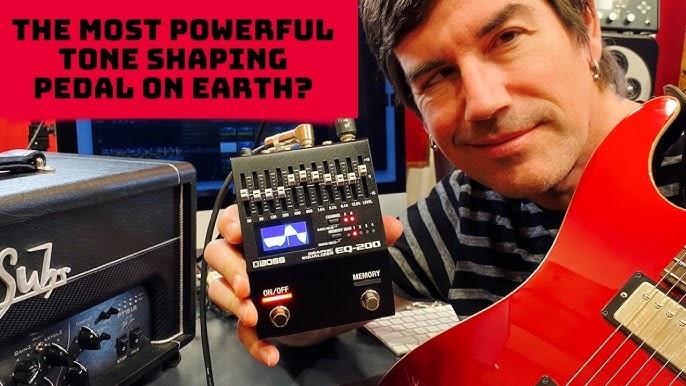It was the day I plugged into a Mesa Triple Rectifier for the first time that my perception of guitar tone was permanently altered. That experience not only revolutionized the way I approached my music but also deepened my admiration for this powerhouse of a guitar amplifier. Mesa Triple Rectifiers are revered for their remarkable flexibility and iconic sonic boom, capable of reshaping any guitarist’s world. In forums dedicated to guitar gear, the Mesa Triple Rectifier often stands as a topic of fervent discussion, fueled by its undeniable impact on the sound of countless legendary records. Yet, not everyone understands why or how these amps transform soundscapes. That’s where this article comes in. Through a detailed exploration of its features, settings, and market standing, we’ll lift the curtain on everything you need to know about the Mesa Triple Rectifier—whether you’re a studio pro or a curious enthusiast. Let’s dive in!
What is the Mesa Triple Rectifier?

As someone deeply embedded in the world of contemporary improvisation, I’ve come to appreciate the intricate engineering that makes the Mesa Triple Rectifier a powerhouse in the amplifier world. So, what exactly is the Mesa Triple Rectifier? It’s an amplifier celebrated for its ability to shape sound with an exceptional degree of precision and power, making it an invaluable tool for musicians across all genres.
Did you know that the Mesa Triple Rectifier can deliver a staggering range of tones, from crisp highs to crushing lows? This amp is designed with three independent channels, each capable of producing myriad soundscapes. For someone like me, who thrives on adapting to various musical styles, this versatility is invaluable.
The heart of this amp lies in its adaptability. With a series of rectifier switches and bold, expressive gain, it offers a spectrum of sonic possibilities. This allows musicians to traverse a broad sound territory effortlessly – a feature I’ve found equally empowering in a jazz ensemble setting or a rock band shrouded in distortion.
Whether you’re diving into a searing solo or laying down a clean and expressive melody, the Mesa Triple Rectifier ensures your performance is both dynamic and profound. In my experience, it’s about offering musicians a bridge between their sonic aspirations and reality, perfectly aligning artistic imagination with technical prowess.
Who Should Use the Mesa Triple Rectifier?

What does it take to truly harness the power of an iconic amp like the Mesa Triple Rectifier? Having spent years delving into the sonic worlds of countless musicians, I’ve learned that this powerhouse isn’t for the faint of heart. From my interviews and personal experiences, I’ve discovered that the Mesa Triple Rectifier is best suited for those who crave bold, high-gain tones and are willing to invest time in shaping their sound. This is an amp that challenges and rewards in equal measure.
In my observations, it’s clear that the Triple Rectifier shines in the hands of those who desire versatility without compromising on power. Its ability to deliver anything from searing lead tones to clean, articulate passages means that it’s particularly appealing to guitarists in the realms of rock, metal, and anything where grit and dynamics are key. If you’re someone who thrives on experimenting with tones, this amp offers a wide palette to paint with, thanks to its multiple modes and robust tonal flexibility.
However, the Mesa Triple Rectifier is also a masterclass in control and discipline. The musicians who make the most of it often have a deep understanding of their sound goals and enjoy navigating its complexities to achieve the perfect tone. Whether you’re in the studio or on stage, if you relish power and precision, this amp is designed for you.
When to Use Different Amp Settings

In my years of practical experience, I’ve discovered how strategic amp settings can unlock a guitarist’s true potential. As I’ve tinkered with the Mesa Triple Rectifier, I’ve found that knowing when to adjust these settings can make all the difference in the world. Can tweaking the dial really transform your sound from average to extraordinary? Absolutely. The Mesa Triple Rectifier is renowned for its tonal versatility, offering an array of settings that cater to varying musical styles and preferences.
Each channel on this amp has a distinct personality. For a clean, crisp sound, perfect for intricate fingerpicking or jazzy chords, I set my amp to the clean mode on Channel 1. This setting allows the natural warmth of my guitar to shine through without any unnecessary distortion. When I switch to hard-hitting rock or metal, the high-gain settings on Channel 3 are my go-to, delivering a powerful, aggressive tone that truly resonates.
Experimentation is key. It’s sometimes in the moments of spontaneous dialing that the magic happens. My advice to any player is to explore and embrace this adaptability. Understanding each setting’s potential will not just enhance your sound but can elevate your entire musical experience, making the Mesa Triple Rectifier an indispensable tool in your gear arsenal.
Where the Mesa Triple Rectifier Stands in the Market
Features Comparison

As someone who has tested numerous amp models firsthand, I can share insights on the standout characteristics that make the Mesa Triple Rectifier a favorite among professionals. What unique features set the Mesa Triple Rectifier apart from its competitors? This amp’s distinct sound features are its key differentiators. Its iconic three-channel versatility allows for a diverse tonal range, which isn’t merely about volume but about achieving rich, dynamic sounds that other amplifiers, like the dual rectifier, might struggle to match. Each channel is meticulously designed, offering everything from pristine cleans to aggressive high-gain textures.
In the context of “Where the Mesa Triple Rectifier Stands in the Market,” these features highlight the amp’s market appeal, especially among guitarists who refuse to compromise on sound quality. Its unique features not only set it apart but also underscore why it’s a sought-after choice for live performances and studio recordings alike. This comparative analysis of the amp solidifies its place in the competitive landscape, setting a benchmark that’s hard to surpass. Understanding these features is crucial, as it informs both the decision-making process and enhances the player’s creative expression.
User Experiences

What do real users think about the Mesa Triple Rectifier, and how does it impact their playing? Through reading countless customer reviews and engaging with musicians, I’ve learned how personal experiences can influence gear perception. This amp’s reputation is noteworthy; it’s not just a piece of equipment, but a game-changer in the market. Many guitarists describe the Triple Rectifier as commanding and versatile. They appreciate its ability to seamlessly transition from clean tones to aggressive high-gain settings. This flexibility is often highlighted in amp reviews, where users note that it caters to diverse musical styles. Despite its strong presence, a common theme in the feedback is the learning curve. I’ve personally encountered musicians who initially felt overwhelmed by its sophisticated controls but ultimately found its mastery rewarding.
The insights from these customer reviews play a crucial role in understanding the Triple Rectifier’s market stance. While some competitors emphasize simpler designs, this amp’s complexity is both a challenge and a charm, reinforcing its position among seasoned players who seek customizable control. As we delve deeper into how it compares feature-wise in the next section, these firsthand experiences provide a nuanced backdrop for evaluating its enduring appeal and market significance.
Conclusion
Is the Mesa Triple Rectifier destined to remain a stalwart in the world of guitar amplifiers? Through my journey as a musician and writer, I have found that its unwavering legacy is indeed matched by few. This amp’s ability to deliver formidable soundscapes and impressive versatility speaks volumes about its enduring appeal. From defining its revolutionary features to exploring its ideal users, the Mesa Triple Rectifier continues to captivate guitarists across the globe.
Its transformative power settings and tonal flexibility provide an unparalleled experience, whether on stage or in the studio. The amp stands out in the market for its rugged build and sonic depth, ensuring it remains at the forefront of amplification technology. User experiences further underscore its impact, with many embracing its distinctive voice. Reflecting on my own encounters, I am convinced that the Mesa Triple Rectifier is more than just a piece of equipment; it’s a testament to the rich, evolving tapestry of guitar amplifier innovation.
FAQs

